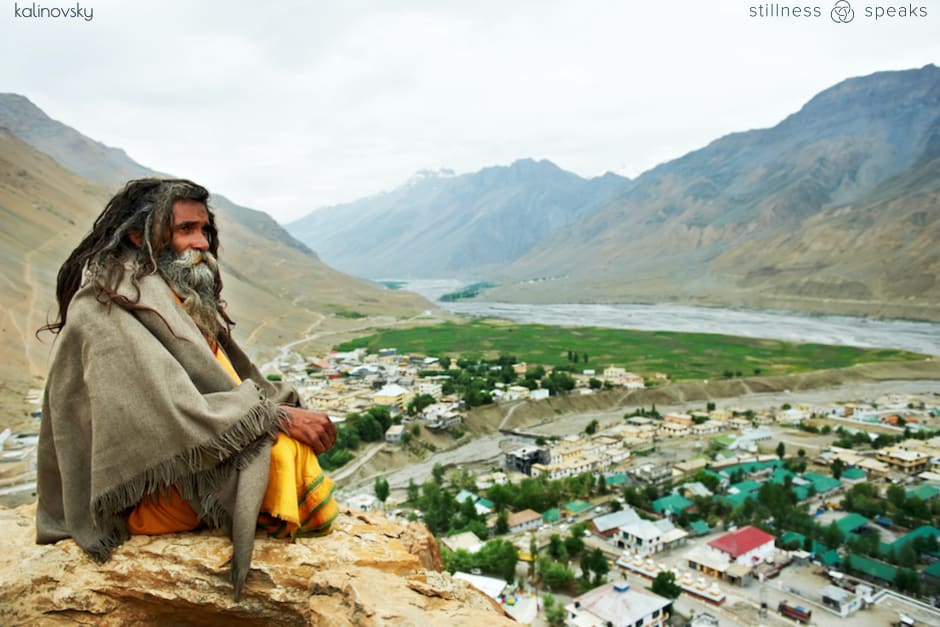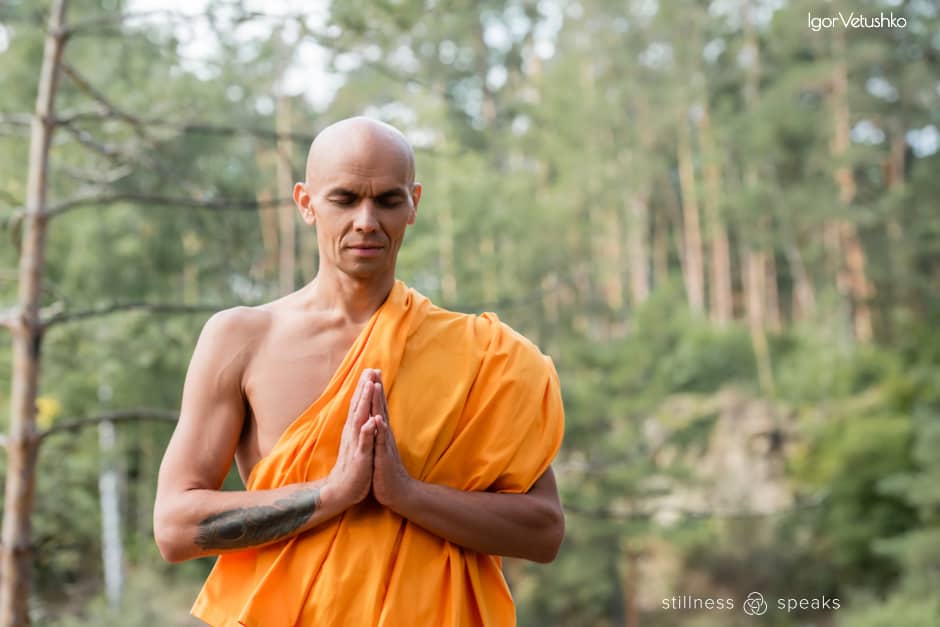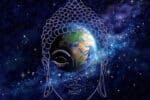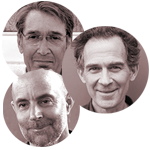in search of being: “… Look at the Milky Way. The earth cannot even be called a grain of sand in this infinity. It dissolves and vanishes. And with it, you—where are you? …” … and “.. what are we? …” ~ G. I. Gurdjieff
Indeed, what are we? … To that end …
Before G. I. Gurdjieff’s death in 1949, one of his principal students and proponents, the Russian journalist, P. D. Ouspensky, took on the Herculean task to chronicle the mystic’s legacy. Upon reading P. D.’s 400-page manuscript called “In Search of the Miraculous: Fragments of an Unknown Teaching”, G. I. is reported to have said something to the effect of, “This is an accurate picture of what I was teaching when Ouspensky was still one of my pupils.” Ouspensky had long before broken off direct contact with Gurdjieff due to the recurring strain between teacher and student.
On occasions Gurdjieff, seemingly went out of his way to antagonize Ouspensky. Likely he was borrowing the Sufi tradition in which the teacher creates an untenable situation forcing an advanced student to leave the school. The idea was to encourage the student to become a teacher, find their own pupils and start their own groups. Which, after their final “falling out,” Ouspensky did.
Ouspensky’s curriculum was taken whole cloth from what he’d so meticulously learned from Gurdjieff. And even though Mr. O’s group was studying Mr. ’G’s cosmology and methodology, each teacher forbade their students to have anything to do with the other group. Fortunately, soon after their deaths at the end of the 1940s, a reconciliation of sorts between their disparate schools was stitched together by their senior students.
The result of that melding was the creation of an official organization known as “The Foundation.” This institution, grew to have centers all over the globe and claimed a certain proprietary protection and preservation over the “original” teachings. And yes, there was a bit of irony in the preservation of what, at its core, was a mishmash of elements Gurdjieff had taken from a wide variety of esoteric and not-so-esoteric spiritual traditions.
Today, with Gurdjieff widely credited as the first person to bring the now pop-culture phenom, Enneagram, to the West, a small portion of his legacy has reached an audience far beyond those who might have considered themselves “mystics”. Originally used by Gurdjieff as a map illustrating cosmic laws, the Enneagram, with its recently uncovered ability at typing personalities, has become something of a cottage industry, right up there with astrology. There are now a number of world-wide schools offering courses and certifications based on Enneagram studies.
So … with that brief Gurdjieff background, we offer a glimpse into his vast teachings – in his own words – through an in-depth preview of his book In Search of Being: The Fourth Way to Consciousness, Edited by Stephen A. Grant, a “senior member of The Gurdjieff Foundation.
This book is Gurdjieff’s own explanation of “the Fourth Way.” Also known as the “way of the sly or shrewd man,” the Fourth Way, was claimed by Gurdjieff, to be an accelerated method of obtaining “immortality,” the object of the other “three ways” — the way of the fakir, the monk and the yogi. Gurdjieff’s concise account of these ways is a surprisingly straightforward narrative for what might be considered esoteric material.
In publishing In Search of Being, Shambhala has offered a great foundational step toward exploring the vast body of work gifted to the world by the enigmatic George Ivanovich Gurdjieff.
In Part 1 of this 2 part series, we consider excerpts from the chapter Spiritual Ways where Gurdjieff summarizes the “three ways” : fakir, monk, and yogi … To read the Foreword by Grant and the chapters Introduction and What Are We?, click here …
This series is part of our ongoing Shambhala Publications series that offers substantive previews of selections from Shambhala Publications new and classic titles …
All italicized text below is adapted from In Search of Being: The Fourth Way to Consciousness by G. I. Gurdjieff, Edited by Stephen A. Grant ©2012 by FourthWay Editions, Inc. This edition was published in 2021. Reprinted in arrangement with Shambhala Publications, Inc. Boulder, CO.
You can purchase the book at Shambhala Publications or Amazon.
In Search of Being: Spiritual Ways
Certain teachings compare man to a house of four rooms. We live only in one room, the smallest and most meager of them all, and unless someone tells us about it, we never suspect that there are also three other rooms, filled with treasure. As soon as a person learns of this, he immediately starts looking for the keys to them, especially the fourth which is the most important room of all. When a person has found a way into this room, he really becomes the master of his house, for only then does it belong to him, wholly and forever. The fourth room gives man immortality, and all religious teachings strive to show the way into it.
There are a great many ways, some shorter or longer, harder or easier, but all, without exception, lead or strive to lead in one direction, that is, to immortality. The generally known and accepted ways can be divided into three categories:
- The way of the fakir
- The way of the monk
- The way of the yogi
The way of the fakir is that of struggle with the physical body, of work primarily on the first room. This way is long and difficult, with no guarantee of success. The fakir strives to develop power over the body, physical will, by means of tormenting or even torturing the body. The whole of this way consists of various nearly insuperable physical challenges. The fakir either stands motionless in the same position for hours, days, months or years; or sits with outstretched arms on a rock in sun, rain and snow; or tortures himself with fire or by inflicting extreme pain. If he manages not to get sick and die before developing what may be called physical will, this person may thereby attain the fourth room, or the potential to form the fourth body. But his emotional, intellectual and other functions remain undeveloped. He has acquired will but cannot make use of it to gain knowledge or strive for self-perfection. In any event, he is by now probably too old to begin this new work.
The second way is that of the monk, a way of faith, of religious feeling and sacrifice. Only a person with strong religious emotion and strong religious imagination can become a “monk” in the true sense of the word. This way also is very long and difficult. A monk spends years, even decades, on inner struggle, but all his work is concentrated on the second room, that is, on feelings. Subjecting all his other emotions to one emotion, that is, to faith, he develops internal unity in himself, control or will over the emotions. In this way he reaches the fourth room, but his physical body and his thinking functions remain undeveloped. In order to be able to make use of the will he has attained, he must develop his body and his capacity to think, which can only be achieved by fresh sacrifices, hardships and renunciations. In effect, a monk has to become both a yogi and a fakir. Very few are capable of undertaking this and even fewer capable of seeing it through to the end. Most either die before reaching this point or become monks in outward appearance only.
The third way is that of the yogi—the way of knowledge, the way of mind. This way is chiefly concerned with the third room, striving to enter the fourth by means of knowledge. The yogi hopes to reach the fourth room by developing his mind, but his body and emotions remain undeveloped and, like those who follow the ways of the fakir and the monk, he is unable to make use of what he has attained. He knows everything but can do nothing. In order to acquire the capacity to act, he must first gain mastery over his body and emotions, again setting to work and obtaining results by means of prolonged efforts. In this case, however, he at least has the advantage of understanding his position, of knowing what is needed, what must be done and in which direction to go. But on the way of the yogi, like those who follow the ways of the fakir and the monk, very few acquire the understanding necessary to know where they are going. Most followers succeed simply in one particular achievement and stop there.
The ways also differ in that each implies a different relationship between the follower and his teacher or leader. The follower of the way of the fakir has no teacher in the true sense of the word. The teacher does not teach but simply serves as an example to be imitated by the follower. On the way of the monk, the follower has a teacher, and part of his duty and work consists of absolute faith and submission to the teacher, of obedience. But the essence of this way is faith in God, love of God, a constant striving to obey and serve God, although there may be much that is subjective and contradictory in the follower’s understanding of the idea of “God” and of “service to God.” On the way of the yogi, the follower cannot and should not do anything without a teacher. In the beginning he simultaneously combines the fakir’s imitation of the teacher with the monk’s faith in the teacher. But, afterward, the follower on the way of the yogi must eventually become his own teacher. He learns the teacher’s methods, internalizes them and eventually applies them to himself.
All three ways of the fakir, the monk and the yogi have one thing in common: they all begin with the most difficult step—the renunciation of all worldly things and a complete change of the follower’s life. A follower must give up his home, and his family if he has one, renounce all the pleasures, attachments and duties of life, and go out into the desert, or into a monastery or ashram. From the very first day, as the first step on the way, he must die to the world. Only then can he hope to attain anything on one of these ways.
In order to grasp the essence of this teaching, we have to understand that following one of the ways is the only possible method by which man’s hidden potential can be developed. This in turn shows just how difficult and rare this kind of development is. As far as humanity is concerned, the general law demands an existence that never strays beyond the circle of mechanical influences, the existence of the “man-machine.” The development of humanity’s hidden possibilities is a way against the general law, against God. This is why the ways are so difficult and exclusive. Yet although they are narrow and straight, they are the only means by which anything can be attained. From the perspective of everyday life, especially modern life, the ways appear as insignificant, quite imperceptible phenomena that need not exist at all. But these insignificant phenomena represent everything that humanity has at its disposal for the development of man’s hidden potential. The ways run counter to everyday life. They are based upon other principles and subject to other laws, which is the essence of their power and significance. In an ordinary human life, even one filled with scientific, philosophical, religious or social interests, there is nothing and there can be nothing that can provide the possibilities for development contained in the ways. The ways lead, or rather should lead, to immortality, while ordinary human life, even at its best, can lead only to death. The idea represented by the ways cannot be understood unless we recognize that without their help there is no possibility of man’s evolution.
We are very grateful to Gershon Siegel (our guest contributor) for writing the preamble in the opening blockquote. As to his background: G. I. Gurdjieff’s cosmology first infected Gershon’s paradigm in 1980 and, like a mysterious allergy, has never fully abated.
And, stay tuned for Part 2 of this series … where you can read about The Fourth Way in Gurdjieff’s own words ...
All italicized text from the heading Spiritual Ways is adapted from In Search of Being: The Fourth Way to Consciousness by G. I. Gurdjieff,Edited by Stephen A. Grant ©2012 by FourthWay Editions, Inc. This edition was published in 2021. Reprinted in arrangement with Shambhala Publications, Inc. Boulder, CO.
And, click here for the free, downloadable PDF of the Table of Contents.
You can purchase the book at Shambhala Publications or Amazon.
As we explore Gurdjieff’s In Search of Being, one of the natural conclusions is the oneness of us all … and in that spirit let us minimize (& hopefully dissolve) the current humanitarian crisis unfolding in Ukraine … by helping in whatever way we can … and to that end here are some options:
1) NPR: Want to support the people in Ukraine? Here’s how you can help
2) Washington Post: Here’s how Americans can donate to help people in Ukraine.
3) Go Fund Me: How to Help: Donate to Ukraine Relief Efforts.
4) USA Today: Want to support the people of Ukraine? These apps and websites can help you send money.
We are all facing financial challenges but IF your situation allows you to donate and help then please do so …
THANK YOU!
And, may your exploration of Gurdjieff … bring insights that illuminate your journey … and …
May you remain safe and healthy as you navigate these unsettling times.
—














